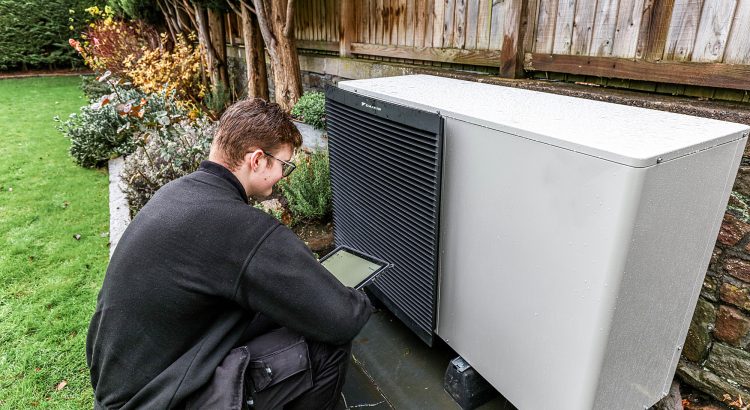soojuspumbad is a great way of increasing the energy efficiency of your home, and if you’re looking for an affordable option for heating and cooling your space, then these can be ideal. But in order to make sure that you get the most out of them, it is important to understand the air heat pump installation process. Here we explain some of the key steps involved and why they matter.
1. Location & Accessibility:
When it comes to installing an air heat pump, one of the first things you’ll need to consider is where it will be located and how accessible this location is. The unit needs adequate clearance on all sides so that it can operate safely and efficiently; there should also be easy access for maintenance or repairs if needed. It is best practice to have someone come in and advise on the best place to install your system before any work begins.

2. Preparation & Installation:
Once a suitable location has been identified, preparation works such as drilling holes into walls or ceilings may be necessary to ensure that cables can run through them properly. After this, technicians will install ducts and mounting brackets before connecting electrical wires and piping systems between components such as condensers, evaporators, and expansion valves. This requires careful measurement and attention to detail for everything to fit together correctly.
3. Testing & Commissioning:
Before use, proper testing must be carried out so that engineers can confirm that all components within the system itself are working correctly, as well as its connection to other equipment such as thermostats or sensors outside the building structure. Once the tests have been successfully completed, commissioning can take place, which involves setting up controls for temperatures or ventilation levels based on user preferences, such as desired temperature ranges at different times of the day, and so on.
4. Maintenance & Service:
It is important that once an air source heat pump has been installed, regular checks are carried out by qualified engineers in order to maintain both safety standards and performance levels over time – especially during the winter months when usage can increase significantly compared to warmer seasons, e.g. summer usage may only include cooling whereas winter may also include additional heating requirements depending on local climatic conditions, etc. This helps to prevent potential breakdowns. This will help prevent potential failures due to wear and tear being overlooked over time.
5. Refrigerant levels :
Refrigerant levels should always be checked regularly during service visits, otherwise, malfunctions could occur which would ultimately affect the performance levels of the entire system, i.e. compressor capacity, condenser fan speeds, etc. This will ensure optimum performance at all times, even during peak periods when demand increases dramatically compared to more relaxed off-peak periods.
6. Monitoring system performance:
Finally, once everything has been installed, tested, commissioned, and maintained to the required standards, monitoring system performance becomes an essential ongoing task. This involves collecting data points related to various metrics such as temperature settings, energy consumption rates, etc. This in turn helps to track general trends over time while providing the opportunity to identify areas where improvements could be made, helping to further reduce the costs associated with running the system effectively.
7. Final adjustments:
As a final step, process engineers make any last-minute adjustments to bring everything up to standard before handing over the keys to the customer (or landlord), i.e. ensuring refrigerant pressures are set correctly based on the type of model being used; ensuring connections are secure and tight; checking for operational flow, no obstructions, etc. This helps to optimize operations from the outset and avoids common problems encountered during the initial commissioning period when companies usually find themselves having to call back to resolve issues arising from poor initial quality control measures not being implemented properly in the first instance.

8. Expert Knowledge & Guidance:
When considering possible options available in today’s market seeking expert knowledge guidance will become a fundamental part of the selection process because having the right team to assist every step of the journey makes the difference between success failure and overall project outcome down the line. Not everyone has the same level of understanding of technical aspects surrounding installations therefore take care to ask questions confirm assumptions along the way seek professional opinion whenever possible go long towards avoiding costly mistakes future enable enjoy peace of mind knowing the job was done correctly without compromising conditions quality safety satisfaction end user experience overall product life expectancy.
In conclusion, understanding what goes into an air source heat pump installation properly can seem daunting at first, but proper planning up front plus using experienced professionals who know exactly what they’re doing can save a lot of headaches down the line ensuring successful completion meets all expectations giving reason to smile afterward when enjoying the comfortable living environment created thanks to your hard work input along the way!




